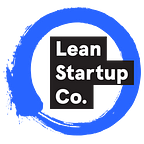Pro Tip: Use Lean Startup to Invent the Future
Written by Jordan Rosenfeld, contributor for Lean Startup Co.
Editor’s note: From now through the end of the year, we’re offering excerpts of talks from select Lean Startup Week 2016 speakers. These pieces are a combination of tips from their presentations and interviews that took place at the conference in San Francisco.
“Prediction is the key to everything,” says Stuart Eccles, CTO of Made by Many, a consulting agency for digital product innovation. Every business wants that magic forecasting ability, and many invest in quick fix solutions that promise to do just that, without success. This is because most companies “are using data from the present to predict the future and failing,” Eccles says. How then, he asks, can startups build “the muscles for prediction?” They can be more like a fox than a hedgehog, he says — borrowing a parable from ancient Greek poet, Archilochus, who said, “The fox knows many things, the hedgehog knows one big thing.”
To Eccles, the “grand unifying theory” of startup success is the relationship to the customer. “We have always gotten our biggest success when we have great access to talk to customers, to prototype and test with customers, and gain lots of customer empathy. I believe that is the heart of Lean Startup.”
But how does a startup become more like the fox of Archilochus’ parable? Eccles refers to notorious statistician Nate Silver, author of the blog FiveThirtyEight (whose logo is a fox), as someone who “takes multiple signals and inputs” before making careful analysis. In the realm of business, a startup also has to take input from diverse sources, which might include “leading experts in technology, machine learning, materials science, sensor technology, changes in prediction, logistics” and so on, he says. But these inputs then have to be routed through to the customer for feedback. “At the heart of it, what is the job you’re doing for the customer?” he asks.
Invent the Future
Of course, there is one problem inherent in talking to customers, Eccles says. “People don’t and can’t tell you what they’ll need in the future; they can only react to what we show them.” However, businesses can’t give up on the idea of anticipating needs and just “let change come” reactively. Startups have to become better at taking their new ideas and finding the right framework for presenting them and “aligning the organization around it.”
However, while it’s tempting for startups to follow every bit of new “silver bullet” advice that emerges, Eccles warns caution. “My number one piece of advice for every kind of startup these days is just ignore all the best practices you read about.” Avoid quick fixes and click bait promises, he adds, and remember, “What works for other people won’t necessarily work for you.” Instead, you’re better off spending the time and money to engage with your users.
“We have to develop muscles for predicting and use our Lean Startup techniques to validate these ideas,” he advises. By doing so, and by teaching the methodology to Made By Many’s clients, Eccles says many of the startups he consults with have gone on to be successful. Made By Many has also launched several thriving businesses, including Hackaball, which is “a connected toy that teaches kids how to code from an iPhone app.” It was named one of Time magazine’s best inventions in 2015.
Fake the Future
Eccles also suggests becoming better forecasters by engaging in “experience prototyping” — in essence, “faking the future,” even before the technology is available. This is done to create an experience for the customer “where they truly believe something incredible is happening but it’s not yet real.” Virtual reality and other technology can make it possible to gauge audience reaction to a product that doesn’t yet exist. Eccles believes it’s a necessary step in trying to “invent” the future. “At some point customers are really only going to give you effective feedback if they believe [the product] is real, so your job is to make them believe it’s real,” he says. This is what he says great visionaries do. They bring together “crazy big ideas and rational behavior.” They take a strong belief system about the way the world is going to work and then they make it happen.
Eccles takes the attitude that in innovation “there’s no destination,” just a journey that keeps changing and moving forward. “We need to be testing the future,” he says, “and we’re hugely committed to using Lean Startup to [do that].”
Enjoyed what you just read? You can watch Stuart Eccles’ full talk at Lean Startup Week 2016 here. Learn more about Lean Startup at http://leanstartup.co.
Originally published at Lean Startup Co..
